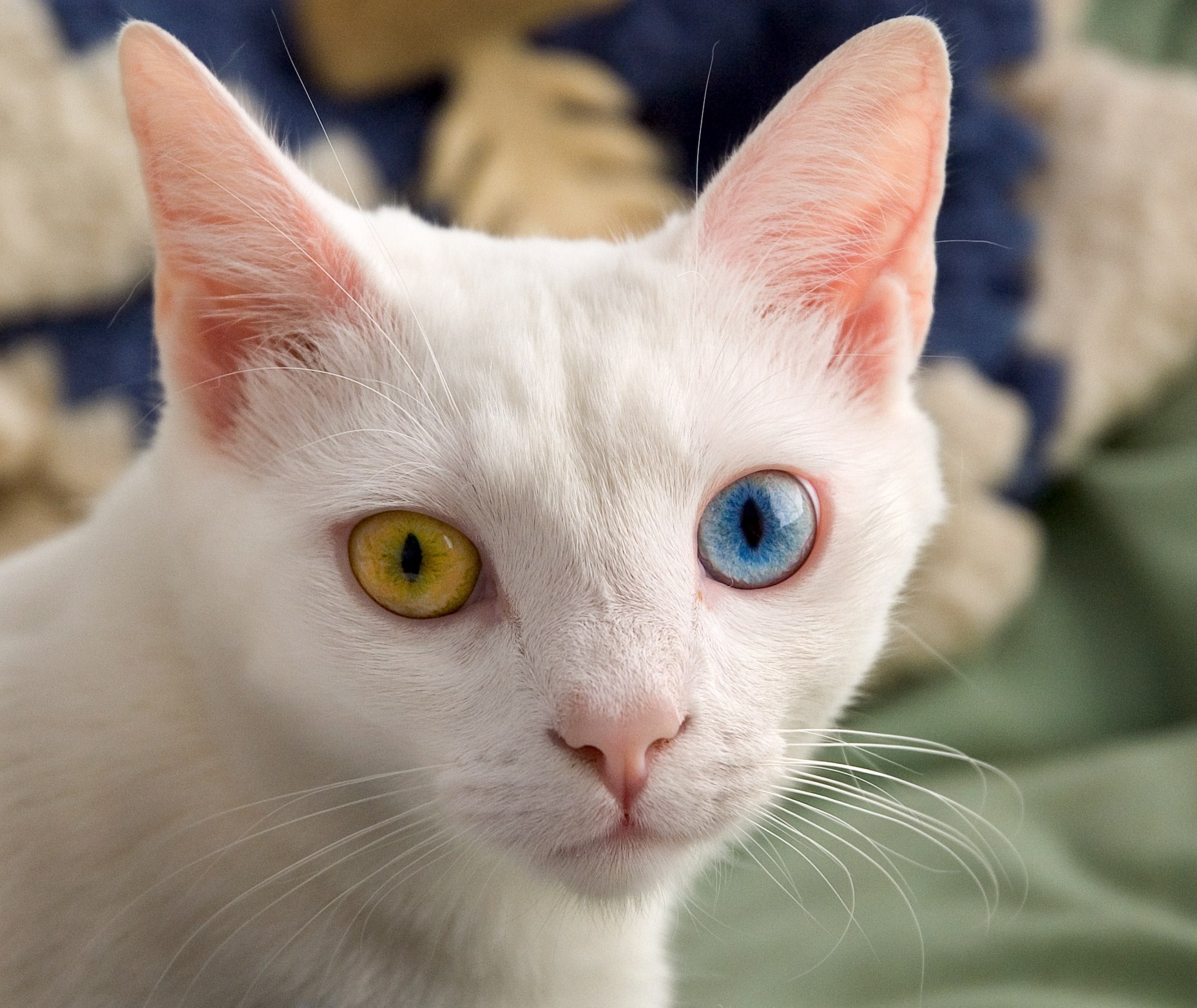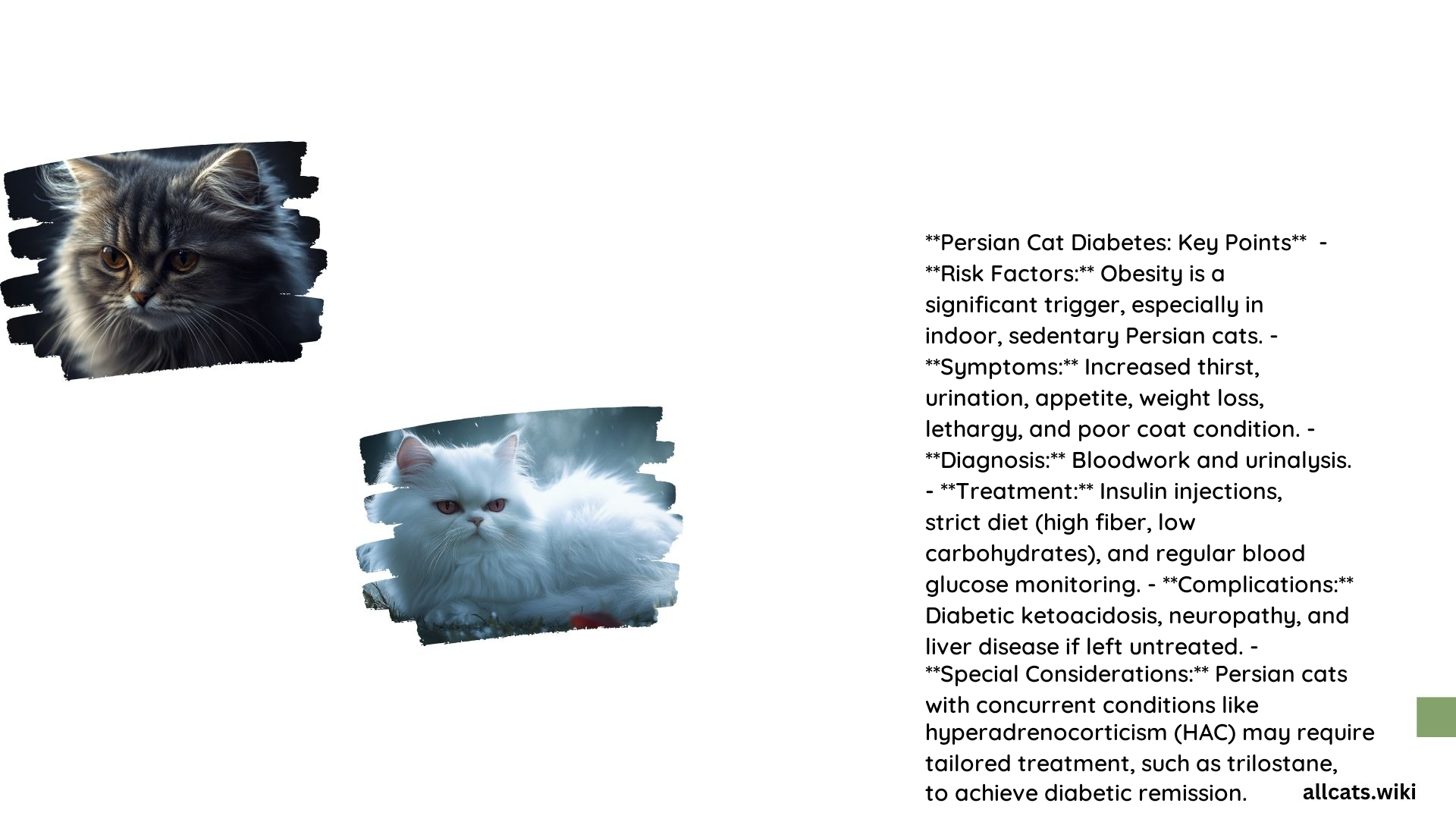Diabetes in Persian cats is a serious health condition that requires careful monitoring and management. This comprehensive guide will explore the common symptoms of diabetes in Persian cats, the risk factors associated with the breed, and effective prevention and management strategies to help keep your feline friend healthy.
What are the Common Symptoms of Diabetes in Persian Cats?

Behavioral Changes
- Increased Appetite: Despite eating more, diabetic Persian cats often lose weight as their bodies cannot effectively use glucose for energy.
- Lethargy: High blood sugar levels can make Persian cats feel sluggish and tired, leading to reduced interest in activities.
- Behavioral Issues: Diabetic Persian cats may become withdrawn, less affectionate, and sleep more than usual.
Physical Signs
- Dry Fur and Skin: Diabetes can lead to a dry, flaky hair coat and dull skin in Persian cats.
- Weight Loss: Despite a good appetite, diabetic Persian cats often lose weight as their bodies break down fat and muscle for energy.
- Poor Coat Condition: The coat of a diabetic Persian cat may lose its luster and become unkempt.
Measurable Indicators
- Increased Thirst and Urination: Persian cats with diabetes will drink more water and urinate more frequently as the body tries to flush out excess glucose.
- Weight Fluctuations: Unexplained weight loss despite increased appetite is a common indicator of diabetes in Persian cats.
What are the Risk Factors for Persian Cats Developing Diabetes?

While specific statistics on Persian cats and diabetes are not widely available, several factors increase the risk of diabetes in cats, which also apply to Persian cats:
- Obesity: Overweight Persian cats are at a higher risk of developing diabetes.
- Age: Older Persian cats are more commonly affected by diabetes.
- Gender: Male Persian cats are more prone to developing diabetes.
- Genetic Predisposition: Although not specifically mentioned for Persian cats, certain breeds have a higher incidence of diabetes, and the genetic predisposition could be a factor.
How Can Persian Cat Diabetes be Prevented and Managed?
Dietary Recommendations
- High Fiber, Low Carbohydrate Diet: Feed your Persian cat a diet high in fiber and low in carbohydrates to help regulate glucose levels. Prescription diets from veterinarians are often recommended.
- Avoid Overfeeding: Monitor your Persian cat’s diet to prevent obesity, a significant risk factor for diabetes.
Exercise Routines
- Regular Activity: Encourage regular exercise to maintain a healthy weight in your Persian cat. For indoor cats, playtime with toys and interactive activities can help.
Medications
- Insulin Injections: Insulin injections are a common treatment for feline diabetes, including in Persian cats. The dose is determined based on blood sugar recordings.
- Oral Medications: In some cases, oral medications may be prescribed, but insulin injections are more common.
Regular Monitoring Practices
- Blood Glucose Monitoring: Regularly monitor your Persian cat’s blood glucose levels, ideally every couple of hours over the course of the day, to adjust insulin doses.
- Veterinary Check-Ups: Schedule regular vet check-ups to monitor the Persian cat’s condition, adjust treatment plans, and perform blood tests and urinalysis.
Suggested Schedule for Monitoring
- Daily Monitoring: Check your Persian cat’s blood glucose levels at least twice a day, and adjust insulin doses accordingly.
- Weekly Monitoring: Monitor your Persian cat’s weight, appetite, and overall condition.
- Monthly Veterinary Check-Ups: Schedule regular vet visits to ensure the treatment plan is effective and to make any necessary adjustments.
References
- Hill’s Pet Nutrition: Cat Diabetes: Causes, Symptoms & Treatment
- South Central Veterinary Clinic: 9 Signs of Diabetes in Cats
- Cats.com: Diabetes in Cats: Causes, Symptoms, and Treatment
